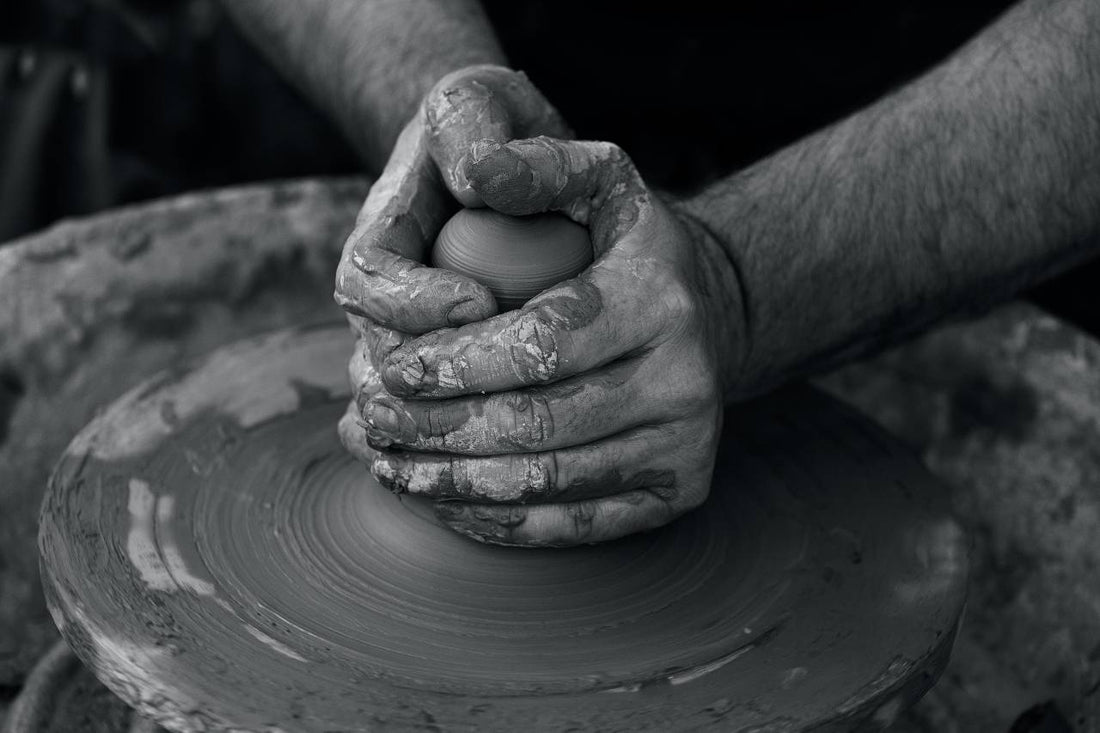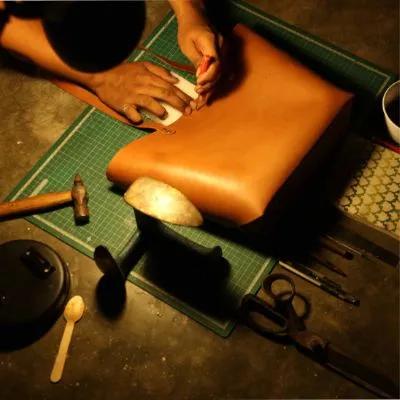
Secrets and Desires of the Craftsman.
Share
The Sensation
Through our eyes, we see beauty and hear the harmony through our ears, but our hands? We don't look at them that often, soft and sensitive aren't they? A touch though is all a craftsman needs to be inspired. It tells him everything a painter sees and a musician hears.
Gliding the tip of your fingers, you feel a light tickle through the texture, a sensation of the strength and the softness of the material comes to you with the slightest of pressure and slowly allowing your whole palm to hold and feel the material creates an experience that resides in the most intimate part of the mind.

Once the craftsman understands the material, he can converse with the material through his tools. He writes his songs and paints with them and you can find his expressions in the obscure details of his creation.
Whisper of a Thought.
The realization of a possibility gives birth to a craft and the desire to transform that into the most beautiful reality makes a craftsman.
It always starts with a need, a functional requirement for everyday life and in time the process is perfected and the needs are fulfilled. However, sometimes the craftsman's desire for expression remains incomplete and in this pursuit, the craft transverses into the realm of art. But this transition is never just his own, it is a collective evolution that flows through generations from a master to his apprentice. Getting perfected through time and experience to represent a collective identity.
This is why a craft is valuable, it is expensive, it does not change every season and owning a craft is not easy, they should be used but also cared for. This is also where craft holds its true value as part of a legacy, it represents and is a reflection of the culture it has come from, the thought and intent that gave it its form and the passion with which it was made through its finesse and in its details.

Photo by bradford zak on Unsplash
A Story of Love.
Craft stays with you and in time becomes a part of your story.
A few years ago on a hot summer morning in Calcutta, I was getting ready to indulge in the special home hospitality of being served the morning tea. I noticed the old empty armchair that is usually occupied by my father during these morning rituals. As I sunk myself in and was about to keep my mug of tea on the handle, my dad gently reminded me from behind to use a coaster, as the age of the armchair was older than him by two generations. The story goes that this armchair was made for my great grandfather in our ancestral home in Benaras, was a witness to the birth of my grandfather, of the Indian Independence, the birth of my father and also the Sunday morning conversations between them.
A piece of handmade furniture became a part of me through my family history that day. And as a craftsman, the durability and functionality of that piece of furniture became inspirational.
The journey of a crafted object does not end with the craftsman. Its final chapter is written by the owner. For a second look away from this screen to the things that surround you. How many of them do you see are going to be with you in the next five or ten years? Some might be discarded in a few months. But the ones that hang around become a little more precious. With every patch and repair, a sticker and a mark, the care and time you have shared with the object, make it a part of you.
With objects that get discarded, it becomes impossible to do so. There is always going to be the next best thing that craves to be bought, forgetting about the ones you already have.

Kintsugi Repair work (right) on Mishima ware hakeme-type broken tea bowl repaired with gold lacquer, 16th century Wikipedia
The Dream
The craft and the craftsman need to be supported by patrons who understand that handmade objects do not merely have a monetary value but can also respect their values as a symbol of the craftsman’s passion, care and hope. While factory-produced objects might have a dictated thought behind them and a seductive but short-lived charm, the time and care invested in each handcrafted object make them unique. Crafted objects have an allure and charisma that comes through time and use. It reveals this beauty to only those who can see objects for what they are.
So the next time you need to buy something, be a concious buyer. Think about the story of the object, and the value it holds for you. Think about who has made them, Why were they made and what is the real worth that they hold apart. As a patron and a person who is investing their hard-earned money into something, it is your right to know, your patronage is valuable for a craft and a privilege as well as the right of a craftsman.
